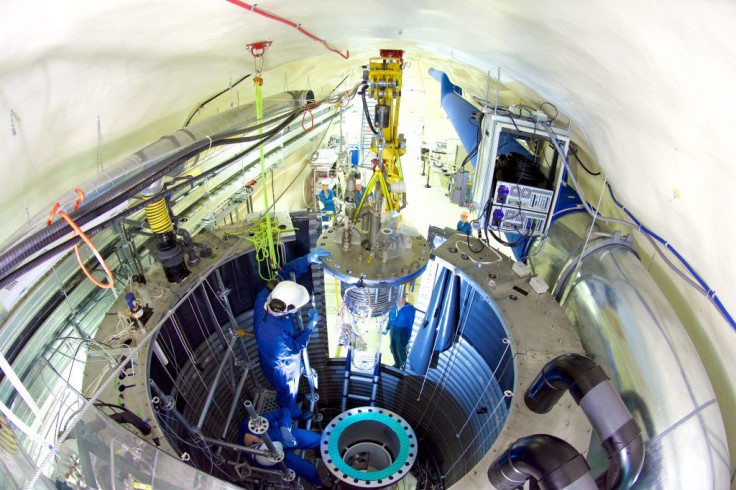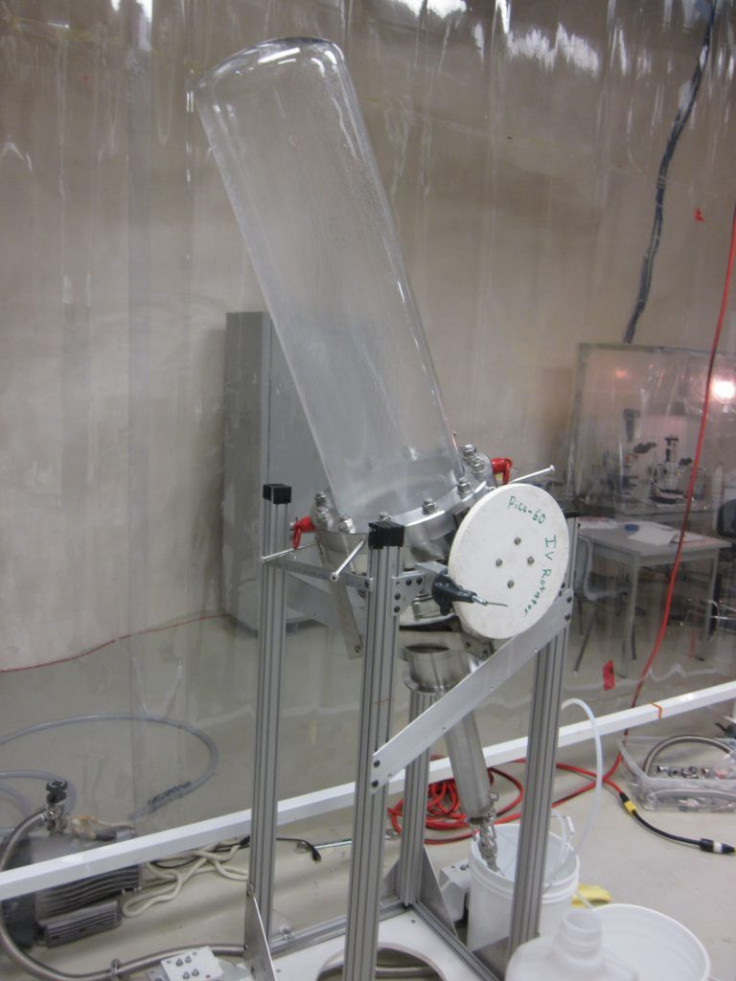Dark Matter Properties Limited By Fermilab’s PICO Experiment Using Bubbles

We know dark matter makes up an overwhelming 85 percent of the observable universe’s mass, but we know only through inference, since we have not been able to devise a way yet to directly observe dark matter. A large number of scientists around the world however, are working on methods to detect various types of dark matter, and one of those methods involves using ordinary bubbles.
The PICO experiment at the Department of Energy’s Fermilab uses a bubble chamber in a bid to detect weakly interacting massive particles (WIMPs), which are a hypothesized type of dark matter. And the latest result from the experiment, while not quite detecting dark matter, impose the best limits yet on the properties of WIMPs.
Read: CERN’s CAST Experiment Doesn’t Find Solar Axions, Places New Limits On Dark Matter Possibilities
In essence, the apparatus used by PICO is a glass jar filled with a fluid in which bubbles can form, and a camera to monitor the jar. The fluid inside the jar — which is called a bubble chamber — is heated to a temperature extremely close to its boiling point. After that, the slightest disruption — such as the energy deposited by a subatomic particle — could cause the fluid to boil, creating bubbles in the process.
“The thing that makes PICO interesting is that we’re using a relatively simple detector design compared to the other dark matter experiments,” Dan Baxter, a Northwestern University graduate student and Fermilab fellow who was PICO’s latest run coordinator, said in a statement Monday.
The PICO bubble chamber, installed 6,800 feet underground at the Canadian laboratory SNOLAB, is designed to find the elusive, neutrally charged WIMPs that might take years to make an appearance. If they exist, these particles should occasionally interact with fluid in PICO’s bubble chamber, creating a certain number of bubbles every year, the statement said.
Scientists working on the PICO experiment had to also make sure, by calibrating the heat and pressure in the bubble chamber, that the detector was sensitive only to WIMPs and not other background signals, such as those from electrons and gamma rays. They also used the popping sound of the bubbles to identify the nature of the particles causing them.
“We see a sound chirp,” Fermilab physicist Andrew Sonnenschein, a collaborator on PICO, said in the statement, referring to the bubbles popping. “It turns out that if you look at the frequency content of the sound chirp and the amplitude, you can tell the difference between different kinds of particle interactions.”
After all the fine-tuning, the PICO experiment showed not a single bubble from interaction with WIMPs. That allowed the researchers to place limits on both the mass of WIMPs and the likelihood of the particles interacting with regular matter. Placing these limits narrows the possibilities where researchers will now look for this hypothesized particle.

Read: Dark Matter Was Only A Tiny Fraction Of The Early Universe
Of the various proposed candidates for dark matter, PICO is designed to look for spin-dependent WIMPs, which are particles sensitive to the spin of the nucleus. An atom’s spin, like its charge, is an intrinsic property of atomic nuclei, and the PICO bubble chamber exploits that fact by using a fluid component — fluoride — with a relatively large nuclear spin. That increased its ability to detect spin-sensitive WIMPs by a factor of 17.
“We don’t know what the WIMPs are. But broadly speaking their interactions with normal matter would fall into two categories: one that isn’t sensitive to the spin of the nucleus, and one that is,” Fermilab physicist Hugh Lippincott, a PICO researchers, said in the statement.
The trouble with detecting dark matter is that it doesn’t easily interact with regular matter, leading scientists to think of innovative ways to try and observe it. The newest dark matter detectors, such as those based on Fermilab’s Tevatron or CERN’s Large Hadron Collider, generate and collect a very impressive amount of data, but have large computing requirements.
The relatively simple bubble chambers were invented over 60 years ago, in 1952, and were used to track charged particles like electrons and protons. They were phased out when much larger amounts of data began being generated.
© Copyright IBTimes 2024. All rights reserved.











